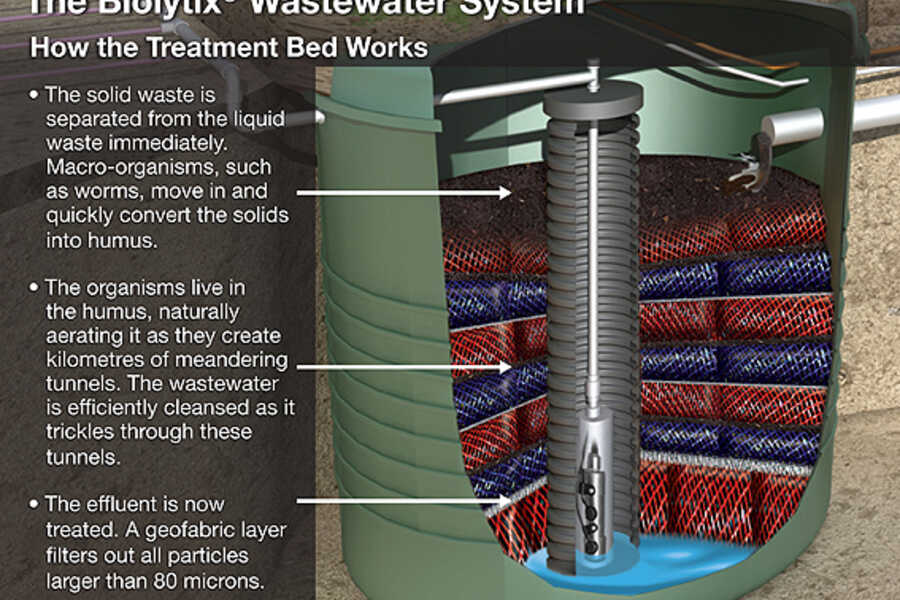The humus is like a rich organic top soil. Worms and beetles continually burrow through it and keep it open, free draining and aerobic. They maintain it in a sponge-like structure, with many kilometers of oxygenated tunnels. It is this large surface area that aerates and cleanses the wastewater as it trickles through.
By mimicking this natural process a wastewater treatment with several advantages can be design: First of all there will be no potentially smelly anaerobic septic stage, since the humus will absorb the odors. The system will have natural aeration, since it will contains oxygen-rich humus, creating the ideal environment for the Biolytic Process, worms and other biolytic organisms can draw oxygen directly from the 21% available in the air, so no mechanical aerator is needed lowering down significantly the consumption of energy.
All of these characteristics make this technology the best suited option for our wastewater treatment with an output that will be recycled into the building for non-potable purpose. This technology is also in agreement with the Life principle “Be resource efficient”.
Wastewater treatment technology

The most common wastewater treatment used by engineers is a water-based process. However, in nature the most efficient treatment does not happen in water, but in moist soil ecosystems on rainforest floors and on river banks. This is where organisms convert waste into cleansing humus. The humus then helps cleanse the wastewater.

